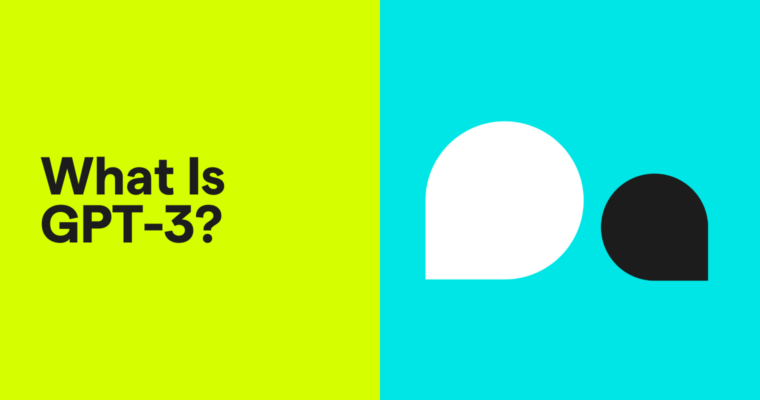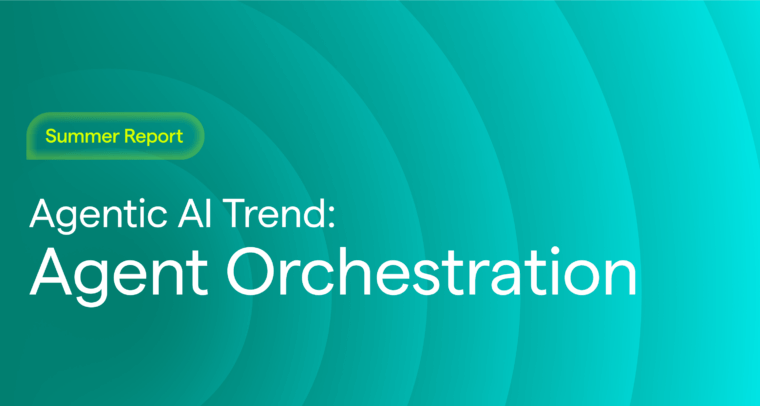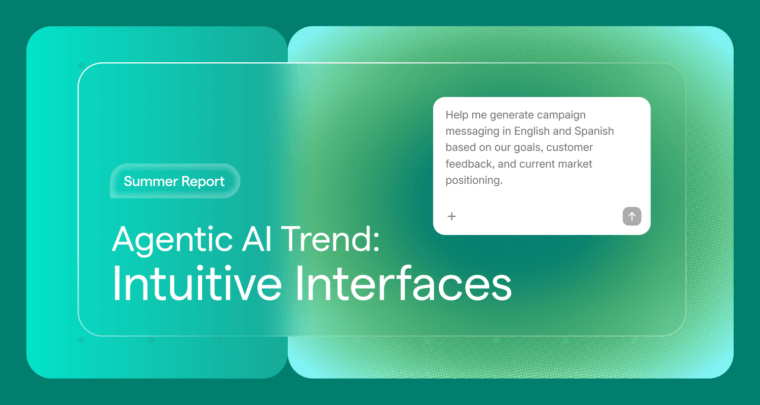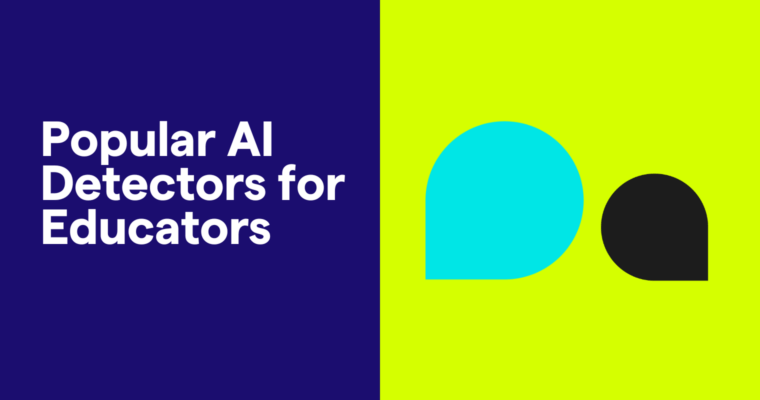
Since its introduction in 2020, GPT-3 has shown the world the potential of generative AI. It was the second of OpenAI’s GPT models to be released to the public, and for many people, it was their first exposure to generative AI. From chatbots to coding assistants, GPT-3-powered applications offer new ways to incorporate technology into your daily life.
Here’s an overview of GPT-3, how it works, and how to use it.
Table of contents
What is GPT-3?
Generative pre-trained transformer 3 (GPT-3) is a generative large language model (LLM), a specialized kind of AI released by OpenAI and licensed exclusively to Microsoft. It’s the third version of the GPT series, and it’s widely used in professional, creative, and personal settings to generate convincingly human-like content.
The exclusive Microsoft license means the model can only be indirectly accessed via API services (provided by OpenAI and Microsoft). Unlike older GPT models, the code and data is available to the general public.
The GPT-3 model has three partially improved successors: GPT-3.5, GPT-3.5 Turbo, and GPT-3.5 with Browsing (Alpha). As of May 2024, only improved versions of GPT 3.5 Turbo are still available to the general public. Older models may still be in use and powering older tools and apps.
GPT-3.5
GPT-3.5 is a refined and improved version of GPT-3. It was optimized for direct chat-based interaction with humans and forms the basis of the first version of the ChatGPT application. Here’s how it differs from GPT-3:
- It’s been updated with newer data several times—the most recent models reach September 2021. The original GPT-3 contained information up until June 2019 or so.
- It generates higher quality, more relevant responses.
- It is smaller, faster at providing responses, and more efficient.
- It’s better at generating creative content, like poetry.
- It’s better at avoiding malicious prompts and minimizing toxicity in its responses.
- It is less suited for advanced or deeply technical natural language processing (NLP) applications.
GPT-3.5 with Browsing (ALPHA)
GPT-3.5 with Browsing is a version of GPT-3 that has been extended to use some online resources when formulating its responses. It was released in April 2023, was updated with information until January 2022, and was even more optimized for human interaction. It also had experimental access to limited online resources to use as part of its operation.
GPT-3.5 Turbo (and Turbo-Instruct)
GPT-3.5 Turbo was released in March 2022. It is even more optimized for chatting with humans when compared with GPT-3.5, and its responses are more accurate and reminiscent of human-like dialogue than previous models. GPT-3.5 Turbo is available to developers, who can use it as a base for custom applications like chatbots and internal knowledge bases. This is the only version of GPT-3 that is still available to the public as of May 2024. The other versions have been replaced with GPT-4 equivalents. An enhanced version called GPT-3.5 Turbo-Instruct (a fine-tuned version of GPT-3.5 Turbo that has been trained on human-written instruction) is the one most commonly used today.
Under the hood: how GPT-3 works
GPT-3 leverages advanced algorithms to detect patterns in written text. These algorithms enable the model to decipher the meaning and structure of language, learning specific facts and rules about the world. GPT-3’s efficacy stems from its basis in an advanced type of machine learning (ML) known as deep learning, which utilizes a specific architecture called the transformer. This architecture significantly enhances the model’s ability to scale, allowing it to process vast amounts of data and discern intricate patterns and connections between words.
Machine learning
Machine learning, a subset of artificial intelligence (AI), allows machines to learn from data and improve over time without explicit step-by-step programming. Instead of needing detailed instructions, machine learning systems can learn from examples, much like a person learning how to make sandwiches by watching others rather than following a specific recipe. Learning from data enables the system to perform tasks by recognizing patterns and inferring rules.
Deep learning
Deep learning, a more specialized branch of machine learning, uses multilayered neural networks to analyze data at various levels. This approach, which is more computationally intensive due to the complexity of the models, excels at handling unstructured data like images and text. It reduces the need for manual feature engineering but requires significant human effort in designing network architectures and tuning parameters.
Deep learning enables models like GPT-3 to learn complex patterns and relationships within the data, supporting advanced applications such as natural language processing and image recognition.
Neural networks and the transformer architecture
Artificial neural networks, particularly those used in deep learning, are complex systems inspired by the human brain. The transformer architecture, a cornerstone of the GPT series, including GPT-3, allows these networks to process large volumes of text in parallel, significantly enhancing efficiency and the ability to learn language patterns quickly.
Transformers work by translating these patterns into algorithms that the computer can interpret. When a prompt is entered into GPT-3, it uses these algorithms to understand the prompt and generate a response based on statistical probabilities, constructing each word in response to the unfolding conversation.
GPT-3 vs. GPT-4
GPT-4 is the next generation of AI models after GPT-3, incorporating several more years of inventions, algorithms, and data. While both models are highly flexible, they have some key differences.
Capabilities and performance
GPT-3 can engage in natural conversation, write code, and generate brand-new content for business and personal use cases. However, it accepts only text-based prompts. GPT-4 is multimodal and can accept images, data visualizations, and other data formats as part of user prompts.
GPT-4 also performs better than its predecessor on several AI benchmarking factors:
- Increased accuracy
- Better understanding of context and nuance
- Ability to accept longer prompts and generate longer responses
- Increased coherence and creativity
- Better performance in English and other languages
- Features continuously updated source datasets, with the most recent versions of the model having a knowledge cutoff up to April or December 2023 (as of May 2024)
Availability
Whereas the latest version of GPT-3, GPT-3.5, is available for free on ChatGPT, you need a ChatGPT Plus account to use GPT-4. However, you can access GPT-4 for free using third-party platforms like Microsoft Copilot.
Adaptability
GPT-3 was programmed to maintain a certain voice and tone for all responses. That tone may not work for every use case. GPT-4, on the other hand, has a feature called steerability, which allows you to set system-wide guidelines for the personality and tone of the responses you get.
Business Quote Module: Learn more about GPT-3 vs. GPT-4
Is GPT-3 free to use?
You can access GPT-3.5, the most updated GPT-3 model, free through ChatGPT.
OpenAI offers paid subscriptions starting at $20 per month. With the subscription, you can access GPT-4 and other generative AI tools, like DALL-E, the image generation platform.
What does GPT-3 do?
GPT-3 can generate text content for many applications, from creative writing to educational materials.
Here’s a closer look at common applications:
Text-based content creation
GPT-3 can generate almost any type of written content, from poetry to business memos. It can write outlines and drafts and provide editing feedback for improvements. Navigate responsible AI use with Grammarly’s AI checker, trained to identify AI-generated text.
In business settings, GPT-3 can be used for the following:
- Generating outlines of blogs and articles
- Documenting processes
- Drafting internal and external communications
- Writing job descriptions and postings
- Generating product descriptions
Creatives use GPT-3 in several ways, including the following:
- Creating outlines for fiction writing
- Writing character descriptions
- Drafting poetry
- Writing jokes
- Creating scripts for film and video
You can also use GPT-3 for personal tasks:
- Writing résumés and cover letters
- Drafting letters to public officials, financial institutions, or other businesses
- Writing social media profiles and captions
- Creating recipes
- Telling your personal story
Interested in exploring other text generation tools? Like GPT-3, Grammarly can help you brainstorm, write, and improve your content. You can tailor Grammarly to your style and tone so every response sounds like you or your brand. Grammarly works inside the tools you already use, like Microsoft Word and Gmail, so there’s no need to switch programs to get AI help with your writing.
Powering chatbots
GPT-3 has sophisticated language capabilities that allow you to engage in natural conversations. Whether you access it through ChatGPT or another application, here are some ways to use these chatbots:
- Ask general questions that you may typically search for, like the meaning of a technical term
- Get answers to frequently asked questions
- Assist with tasks like creating to-do lists and meeting agendas and helping with planning
- Engage with website visitors to learn about who they are and what they’re looking for
Generating code
GPT-3 is fluent in most publicly available programming languages. You can use it to perform many coding tasks:
- Explain what a snippet of code does
- Write snippets of code using a natural language prompt
- Identify bugs and coding errors and suggest ways to fix them
- Generate documentation for a snippet of code
- Drafting test cases
Supporting educational tasks
GPT-3 can help educators and students save time, improve their work, and create more effective educational materials. Here’s how it’s used in academic settings:
- Tailoring educational content to specific interests or learning styles
- Drafting lesson plans
- Creating tests and exam questions
- Assisting with research
- Explaining complex concepts, such as advanced mathematics or philosophy
Summarizing text
You can copy and paste content into GPT-3 and ask it to generate a summary. Here are some common ways to use this feature:
- Get a list of key points from an article
- List all of the characters from a short story
- Get a layperson’s summary of a technical report
- Get important takeaways from a speech transcript
Research
GPT-3 was trained on a large volume of data, so it can generate content on many subjects. You can use these capabilities to research topics by engaging in natural dialogue, which can be easier than searching for information. Here are some ways you can use GPT-3 for research:
- Get step-by-step instructions on a process
- Talk through complex concepts, such as emerging technologies
- Explore new hobbies or career paths based on your skills and interests
- Learn about historical figures and notable events
- List potential research avenues for exploring a topic, such as where to find historical documents
Brainstorming
GPT-3 can help you get your creative juices flowing by brainstorming ideas for creative projects. Here’s how:
- Come up with ideas for icebreakers and other activities to do during a team event
- Generate a content calendar for your website and social media
- Generate concepts for fictional characters
- Suggest improvements to make existing ideas better or tailored to a specific audience
- Suggest ideas for products or services to offer based on your audience and skills
Benefits of GPT-3
With its wide-ranging applications and ease of use, GPT-3 can improve efficiency and make AI accessible to a large audience. Let’s review some of its key benefits.
Increased efficiency
GPT-3 allows you to streamline processes by performing manual, time-consuming tasks. For example, a small business owner can use GPT-3 to quickly draft announcements about a new product for its website, social media, and customer email campaigns.
GPT-3 can also help improve productivity in fields where companies struggle to find qualified talent, like software development. By using GPT-3 to write common snippets of code and generate documentation, coders can get more work done in less time, which helps to ease some of the pressures created by the talent shortage.
Flexibility
GPT-3 can perform many tasks without specific training in those areas. Whether you’re an individual user or developer, GPT-3 has extensive out-of-the-box capabilities.
For example, you can use GPT-3 to outline a film script without explaining what the key elements of a script outline are. GPT-3 has the foundational training to understand that on its own. This flexibility makes it a powerful tool for everything from generating recipes to powering customer service chatbots.
Natural language capabilities
You can interact with GPT-3 using the same language as another human. It doesn’t require you to know coding or have specialized skills.
This accessibility allows people to complete tasks they have little experience in. For instance, a coding newbie can create code snippets by simply describing what they want the code to do. Someone who isn’t a strong writer can draft emails and letters more confidently.
It’s not a replacement for expertise and human-to-human education, but it does help to reduce the learning curve for many.
Drawbacks of GPT-3
For all of its benefits, GPT-3 can sometimes be biased and inaccurate. There are also ethical concerns about how burgeoning AI platforms are trained. Here are some downsides to be mindful of.
Biases
Since GPT-3 was trained on existing content, sometimes it generates responses that reflect biases in its training dataset. These biases can take many forms, including a lack of information.
For example, much of the information in the training dataset is in English and represents Western cultures. If you ask GPT-3 to describe people from countries like France and the United States, its responses may be more nuanced and detailed than those from non-Western countries.
Biases also come in the form of negative stereotypes. For instance, if you prompt GPT-3 to create a flighty and emotional character, it may be more likely to create a female character. It’s also possible for GPT-3 to seemingly endorse a political stance in its output by using language that favors one side of an international conflict or by generating longer, more detailed responses on one political perspective over another.
Inaccuracies
Despite GPT-3’s ability to generate content on various subjects, it isn’t always correct. This is due to a phenomenon called hallucinations, which is a problem for all generative AI models.
Hallucinations occur when the model makes inaccurate predictions. Since each response is generated word by word based on probabilities, sometimes GPT-3 goes down the wrong track. There’s no easy way to distinguish between a correct or incorrect response. Therefore, it’s important to always verify the information it generates.
Ethical concerns
GPT-3 and other generative AI platforms are under scrutiny for using copyrighted data for training without permission from the content owners. While OpenAI has some licensing agreements, a significant portion of its training data comes from publicly available web content.
According to OpenAI, these training practices fall under the protection of fair use. However, there is no definitive answer yet on this issue, as AI experts, courts, and regulators are still hashing out these questions.
GPT-3 and the AI boom
The introduction of GPT-3 represented a major step forward for generative AI. Using an advanced form of machine learning called deep learning, it can understand the concepts, meaning, and structure of language. GPT-3 demonstrated that these training practices could create highly flexible AI models that generate humanlike content and engage in conversational dialogue.
OpenAI’s next model, GPT-4, has built upon those capabilities by being more accurate, nuanced, and multimodal. GPT-3 and GPT-4 are key components of the AI boom and are helping to make generative AI accessible to all.
As you explore generative AI tools, remember that you may encounter biases, inaccuracies, and ethical hurdles. These issues don’t undermine generative AI’s flexibility, efficiency, and ease of use. However, being aware of potential pitfalls allows you to use tools like GPT-3 safely and wisely.






